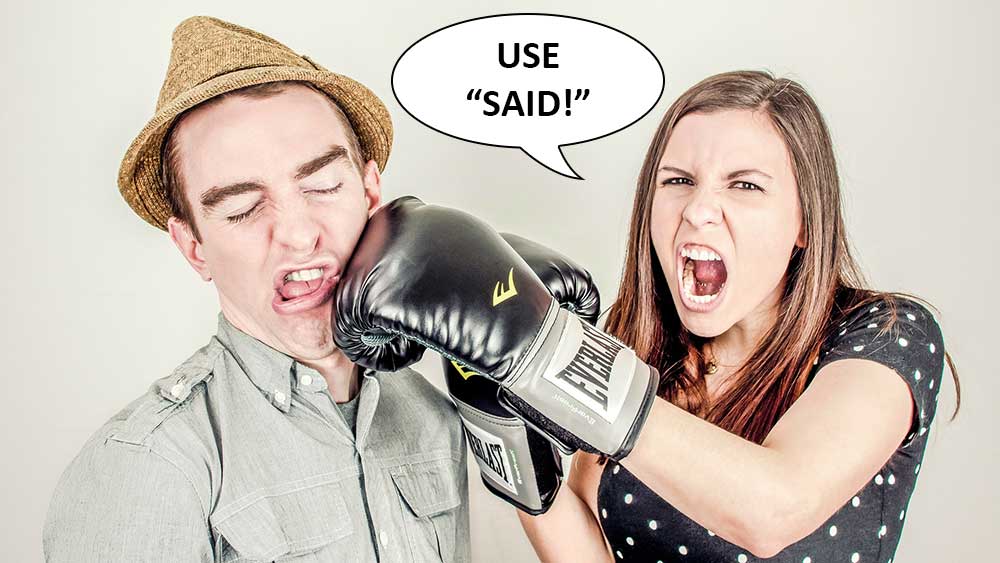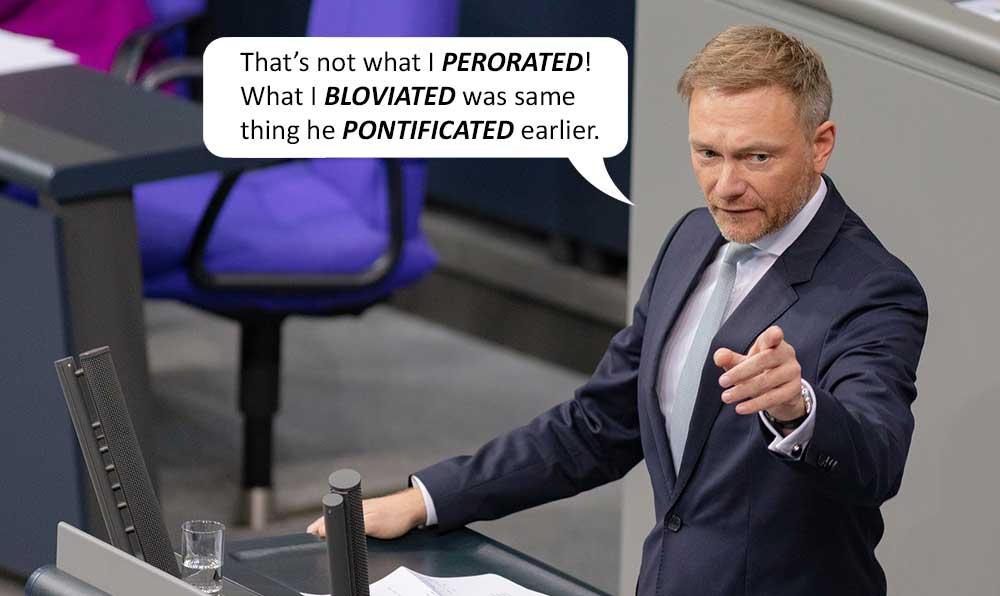To “Said” Or Not To “Said”

A while back, I wrote an article called “Fictional Speech,” She Said. The point of the article was to help people liven up their dialog and bring their characters to life. In the article, I suggested using unique, descriptive dialog tags.
I’ve learned a lot since then.
My advice wasn’t the greatest. It’s still a good article, though. It does contain some helpful tips on how to write dialog and make it seem more realistic, but I missed the mark on the use of dialog tags.
I subscribe to several writer’s groups on various platforms such as Reddit and Facebook. One of the topics that always seems to come up – and cause heated debate – is the use of non-standard dialog tags versus using boring old said.
Recently, that topic came up again and this time I had something to say.
When I first started writing, I, too, thought said was boring and unimaginative. Then I learned better.
The best writing advice I’ve seen suggests that using said makes your dialog tags invisible. It is a word that is so ingrained in our brains that we can scan over it knowing it’s there but not really seeing it. This allows our brain to focus on what’s important, not the tag, but the speech itself as well as the surrounding description or action of the scene we’re creating. The flow of prose becomes smoother, easier to read when using said, which is much less distracting.
Of course said is boring, that’s the whole point. We’re not really supposed to see it. By contrast, overuse of “unique” dialog tags is more difficult to comprehend because the brain actually has to stop and process them. The absolute best way to write dialog is to minimize use of dialog tags altogether. Instead, convey important information through action surrounding the speech.
Example: “I’d like to make a toast to the bride.” John raised his glass and smiled at his baby sister.
This example shows who spoke and also created action without using a dialog tag at all. But what if you want to show that the speaker is whispering or shouting?
If dialog is well-written, the reader understands the dynamic of the scene and can expect the characters to behave, and thusly speak, in a certain way.
If your characters are tip-toeing through a creepy, abandoned house trying to hide from a homicidal maniac, chances are they will whisper if they have to speak. You certainly wouldn’t expect your main character to shout “There’s the front door!”
In cases like this, it’s really not necessary to inform your readers that she whispered. It’s naturally expected and good common sense.
I’m not saying that you should never use non-standard dialog tags. There are times when they are a necessary addition. Such as when your character speaks in an unexpected way that can only be conveyed by a descriptive tag.
For example, you have characters sitting in a library seeking clues to a puzzling mystery. They don’t want anyone to overhear them, and they are, after all, in a library. The reader naturally assumes the characters are speaking in hushed tones and whispers. When “John” has an unexpected revelation and says “Holy crap!” the reader is going to assume the words are spoken low and quiet. To convey that there is a sudden change in demeanor or a violent reaction that is uncharacteristic for the situation, it is perfectly okay to write “Holy crap!” he shouted, because the reader isn’t expecting John to shout loudly in that situation.
It’s best to use non-standard dialog tags only when necessary to show an unexpected tone of voice. However, using them too often, or using overly imaginative dialog tags can be distracting.
I’ve seen some pretty bad dialog tags including blustered, queried, wailed, retorted, bellowed, quipped, articulated, and, God forbid, ejaculated. Please, just don’t.

If you feel the need to use a non-standard dialog tag, you probably haven’t done a very good job of establishing a personal connection between the character and your reader. The reader should already understand the character and be able to identify how they’re feeling or what they’re thinking on some level. Instead, let their actions and words do the talking.
Back to said.
Just because you’ve wisely chosen to use said instead of a non-standard dialog tag, that doesn’t mean you should use it a lot. If dialog is well-written, you can keep dialog tags to a minimum. The natural ebb and flow of conversation, speech patterns, and unique character traits should all help the reader to identify who has spoken without ever using said.
Example:
“What did the doctor say?”
John shrugged. “Not much. I have to wait until the test results come back.”
“I’m sure it’ll be fine.”
“Yeah? You’re not the one dying.”
“You’re not dying. Don’t be so melodramatic.”
“How can you say that? What if I am dying?”
“Honey, no one dies from constipation!”
In the above example, it’s clear who is speaking even though we only know the name of one of the characters. Said is unnecessary. However, if more than two people are engaged in conversation, or if one character speaks out of turn, using said can help clarify who said what. It’s still better – and more interesting – to avoid dialog tags as much as possible and either precede or follow your dialog with identifying prose.
Example:
“What did the doctor say?” Jenny set down her magazine and leaned forward.
John shrugged. “Not much. I have to wait until the test results come back.”
“I’m sure it’ll be fine, Dad.” Abby shook her head dismissively.
“Yeah? You’re not the one dying.”
“You’re not dying. Don’t be so melodramatic,” Abby said.
“How can you say that? What if I am dying?”
“Honey, no one dies from constipation!”
Since we can assume that Abby wouldn’t call her dad Honey, we instinctively know who spoke the last line without actually identifying the speaker.
Do a little bit of research and listen to how conversations flow in the real world. Be smart and creative with your dialog, minimize dialog tags, and it will flow naturally.
